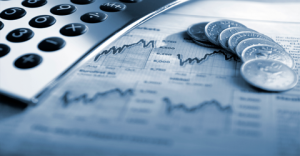In a previous article, “Explaining the Balance Sheet” we 
You can find an example P&L account below. The numbers in brackets and parenthesis show how the calculations were made
and explain each item category used in the P&L. The notes are found after the example.
Super Widgets Limited Profit & Loss Account 2009/2010

“Notes” are used in the P&L statement to provide an additional breakdown as to how the individual line figure was calculated.
These “Notes to the Accounts” form part of the published financial accounts of a company. Using the example given above.
Note 1 – Geographical Analysis of Turnover

The Headings Explained
(1) Turnover
“Turnover” is another word for “Sales” and represents the returns made from the supply of products
and services during the reporting period, less VAT and any trade discounts.
(2 – 5) Cost of Sales
This category states the direct costs involved in the selling of products of services. It’s important to
remember to calculate the cost component for products or services that have actually been sold. If there
are any unsold goods left at the end of the reporting period these will be reported in the balance sheet
as “Stock”. For “Superwidgets”, all direct costs like the cost of the widgets (materials) and the wages of
the production staff would be included. Indirect costs like the rent of the warehouse and advertising
spend would not be included.
(6) Gross Profit
Put simply, “Gross Profit” is the amount of turnover less the cost of sales. Gross profit does not account
for indirect expenses, tax, interest or dividends.
(7) Distribution
This heading captures costs that occur during the process of transporting the products or services to
the customer. Some direct selling costs like sales commissions and advertising spend may be included in
here as they are directly related to moving the product or service from the business to the customer.
(11 – 13) Expenses
All expenses not previously captured are entered here. These are “indirect” expenses such like rent,
electricity, insurance, etc, etc necessary to keep the business running. Administrative and Accountancy
charges (like plant and equipment depreciation and bad-debt write-offs) are also included in here.
Depreciation is the amount the piece of plant of machinery has decreased in value over the period, and
special reporting rules exist for its disclosure. You have to disclose the method of depreciation used
(usually the straight line or reducing balance method) and how the figure is arrived at.
For super widgets, let’s say they own one piece of machinery and are using the “Straight Line” Method:
Purchase Price of Machinery:
Expected Life of Machinery:
Recoverable / Scrap value:
Purchase Price of Machinery: €440,000 in 2008
Expected Life of Machinery: 10 years
Recoverable / Scrap value: €4 0,0000 in 2018
So, the amount of depreciation charged to the P & L each year is 40,000 (440,000-40,000)/10.
The value of the fixed asset in the balance sheet needs to also be “written down” (reduced) by €40,000
each corresponding year. This ensures the transaction balances (“Double-entry” bookkeeping) and that
the true value of the machinery is reflected in the published accounts.
(14) Net Profit before Tax
This category is really self-explanatory. It shows the profit before taxation and is a useful summary as
every company’s corporation tax profile is different. For example, the company may have a lot of tax
credits or have just become profitable, so the level of tax isn’t always directly proportional to the level of
profit made.

